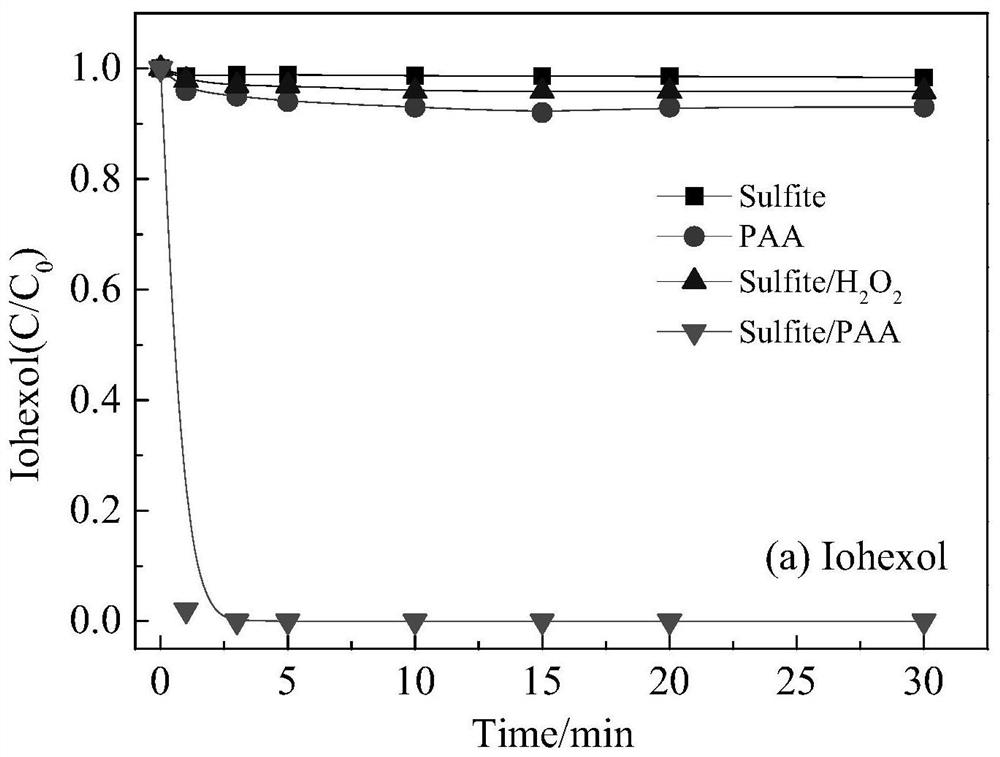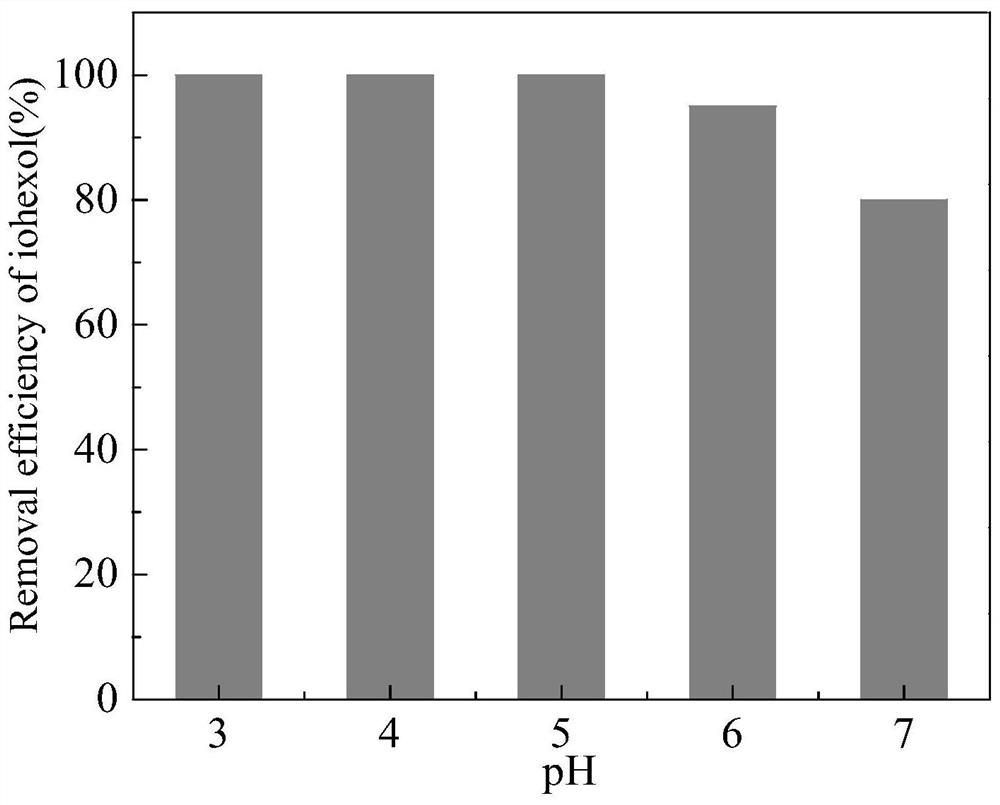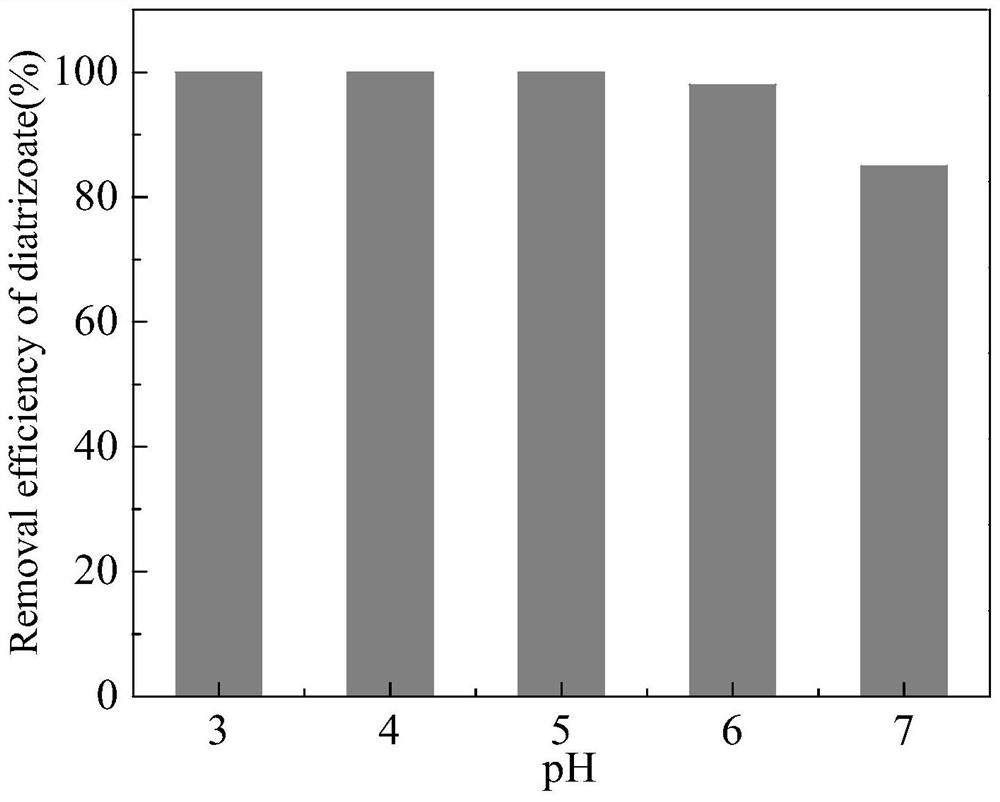Method for removing organic pollutants in water by activating sulfite with organic peroxy acid
A technology for activating sulfite and organic pollutants, which is applied in the field of water pollution treatment, can solve problems such as sulfite activation, and achieve the effects of simple operation, good treatment effect and cost reduction
- Summary
- Abstract
- Description
- Claims
- Application Information
AI Technical Summary
Problems solved by technology
Method used
Image
Examples
Embodiment 1
[0023] At room temperature, add peracetic acid to the water body to be treated whose organic pollutant is iohexol, then adjust the pH value of the water body to be treated to 4 with sodium hydroxide and sulfuric acid, stir evenly with a stirrer and react. Wherein the molar concentration ratio of iohexol, peracetic acid and sodium sulfite in the water body to be treated is 1:40:400. During the reaction, at different reaction time points (0, 1, 3, 5, 10, 15, 20, 30min), water samples were taken to measure the remaining concentration of iohexol in the water body, and the concentration of iohexol under different reaction time conditions was plotted. degradation curve.
[0024] The removal effect of the sulfite system on iohexol, the removal effect of the peracetic acid system on iohexol, and the removal effect of the hydrogen peroxide / sulfite system on iohexol were respectively used as a comparison. The removal effect of acetic acid activated sulfite system on iohexol, draw the d...
Embodiment 2
[0027] At room temperature, add peracetic acid to the water to be treated with iohexol as the organic pollutant, then use sodium hydroxide and sulfuric acid to adjust the pH value of the water to be treated to 3, 4, 5, 6, 7, and stir Stir well and react for 30min. Wherein the molar concentration ratio of iohexol, peracetic acid and sodium sulfite in the water body to be treated is 1:40:400. After the reaction, water samples were taken to measure the remaining concentration of iohexol in the water body, and the degradation efficiency diagram of iohexol under different pH conditions was drawn. The experimental results were as follows: figure 2 shown.
[0028] Depend on figure 2 It can be seen that the ordinate represents the removal efficiency of iohexol, and the pH value of 3 to 7 can realize the efficient degradation of iohexol, and its degradation efficiency is more than 80%, especially when the pH value is 3 to 5, after 30 minutes of reaction, The remaining concentratio...
Embodiment 3
[0030] At room temperature, add peracetic acid to the untreated water whose organic pollutant is sodium diatrizoate, and then use sodium hydroxide and sulfuric acid to adjust the pH value of the untreated water to 3, 4, 5, 6, 7. The stirrer stirred evenly and reacted for 30min. Wherein the molar concentration ratio of sodium diatrizoate, peracetic acid and sodium sulfite in the water body to be treated is 1:40:400. After the reaction, take a water sample to measure the residual concentration of sodium diatrizoate in the water body, and draw the degradation efficiency figure of sodium diatrizoate under different pH conditions. The experimental results are as follows image 3 shown.
[0031] Depend on image 3 It can be seen that the ordinate represents the removal efficiency of sodium diatrizoate, and the efficient degradation of sodium diatrizoate can be achieved at a pH value of 3-7, and the degradation efficiency is above 85%. It shows that peracetic acid activated sulfit...
PUM
 Login to View More
Login to View More Abstract
Description
Claims
Application Information
 Login to View More
Login to View More - R&D
- Intellectual Property
- Life Sciences
- Materials
- Tech Scout
- Unparalleled Data Quality
- Higher Quality Content
- 60% Fewer Hallucinations
Browse by: Latest US Patents, China's latest patents, Technical Efficacy Thesaurus, Application Domain, Technology Topic, Popular Technical Reports.
© 2025 PatSnap. All rights reserved.Legal|Privacy policy|Modern Slavery Act Transparency Statement|Sitemap|About US| Contact US: help@patsnap.com



